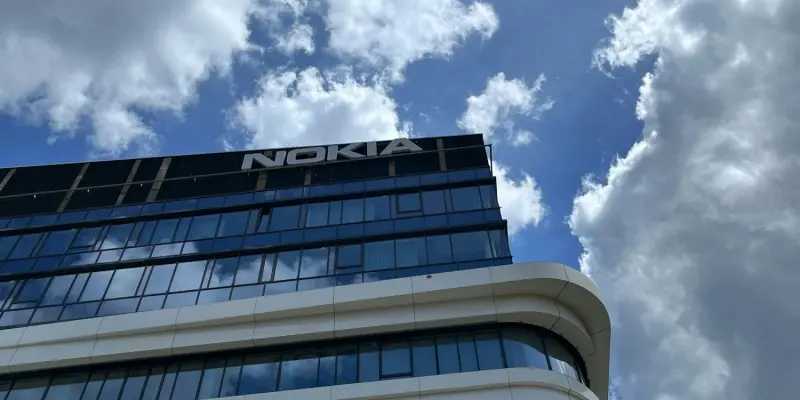In a dynamic world where digital operations are paramount, EXA Infrastructure and Nokia have come together to elevate the standards of network efficiency with cutting-edge advancements. This strategic collaboration focuses on enhancing network capability and sustainability, aiming to address the surging demand for data capacity driven by technological developments in data centers, cloud computing, and artificial intelligence. The crux of this partnership lies in Nokia’s innovative 1.2 terabits per second (Tbps) per-channel coherent optical engine, which introduces a transformative leap in network performance. By integrating this robust solution, EXA Infrastructure expects a remarkable growth in network capacity, nearly a 15% increase, while simultaneously halving both power consumption and cost per bit. Such improvement is vital, ensuring networks can robustly cater to the demands of modern digital economies while adhering to environmental mandates for efficiency and sustainability.
Technological Advancements in Network Infrastructure
The collaboration between EXA Infrastructure and Nokia highlights a significant shift in the industry towards embracing technologies that optimize both performance and environmental sustainability. Nokia’s 1.2 Tbps optical engine stands at the forefront of this transformation, emphasizing an eco-friendly approach without compromising on network capabilities. This upgrade aligns seamlessly with EXA’s mission to advance their infrastructure in a way that benefits users and the environment alike. The need for more bandwidth has become even more critical, given the ever-increasing integration of artificial intelligence applications and cloud-based services that demand high-speed, reliable connectivity. By enhancing network infrastructure, EXA is empowering industries to harness innovative technologies fully while maintaining operational excellence.
This strategic upgrade goes beyond merely expanding capacity; it symbolizes a forward-looking vision of how future network infrastructures should be designed. As networks evolve, considerations around energy consumption become increasingly crucial. With global sustainability objectives in mind, implementing technology that reduces power usage yet boosts performance embodies a progressive approach to telecom solutions. By focusing on sustainability, EXA Infrastructure and Nokia exemplify how the industry can address the dual challenge of meeting technological and environmental objectives. Although achieving such ambitious outcomes requires significant investment and innovation, the long-term benefits promise to be substantial, marking a critical step toward network infrastructures designed for future demands.
Addressing Industry Demands and Sustainability Goals
Central to this transformation is understanding the broader industrial landscape and its demands. As data volumes skyrocket due to enhanced reliance on digital communications and AI technologies, network infrastructures must evolve rapidly to keep pace. EXA Infrastructure’s enhancement with Nokia’s optical engine serves this very purpose, ensuring businesses remain competitive by being able to scale operations smoothly and adaptively. This is particularly important given the extensive data processing needs of various industries that are becoming increasingly reliant on high-speed networks to deliver seamless experiences. The growing energy requirements of data centers pose a challenge to sustainability targets, making power-efficient solutions a top priority. With EXA’s upgraded infrastructure, reduced energy consumption reflects a proactive measure to address the environmental impacts of heightened network usage. James Watt from Nokia emphasized this aspect by stressing the significance of power conservation, asserting that efficient energy use could significantly influence expansion capabilities and environmental impact. As such, EXA’s strategic decision to integrate advanced technology into its infrastructure not only accommodates greater data transfer capabilities but also aligns with global efforts toward smarter and greener technological solutions.
The Future of Network Services
The collaboration between EXA Infrastructure and Nokia marks a major industry shift towards technologies that enhance both performance and sustainability. Nokia’s 1.2 Tbps optical engine is at the cutting edge of this change, offering an eco-friendly approach without sacrificing network capabilities. This upgrade perfectly aligns with EXA’s goal of advancing infrastructure that benefits users and the environment. With a growing demand for more bandwidth, driven by rising AI applications and cloud-based services, the need for high-speed, reliable connectivity is greater than ever. Enhancing network infrastructure enables industries to fully utilize innovative technologies while upholding operational excellence. This strategic upgrade is about more than expanding capacity; it reflects a forward-thinking view of future network design. As networks evolve, energy consumption considerations become vital. Global sustainability goals call for tech that reduces power usage while improving performance, representing a progressive approach to telecom solutions. By prioritizing sustainability, EXA and Nokia demonstrate how to tackle the twin challenges of meeting tech and environmental objectives. Substantial investment and innovation are key, but the long-term benefits promise to be impactful, paving the way for infrastructures tailored to future needs.

